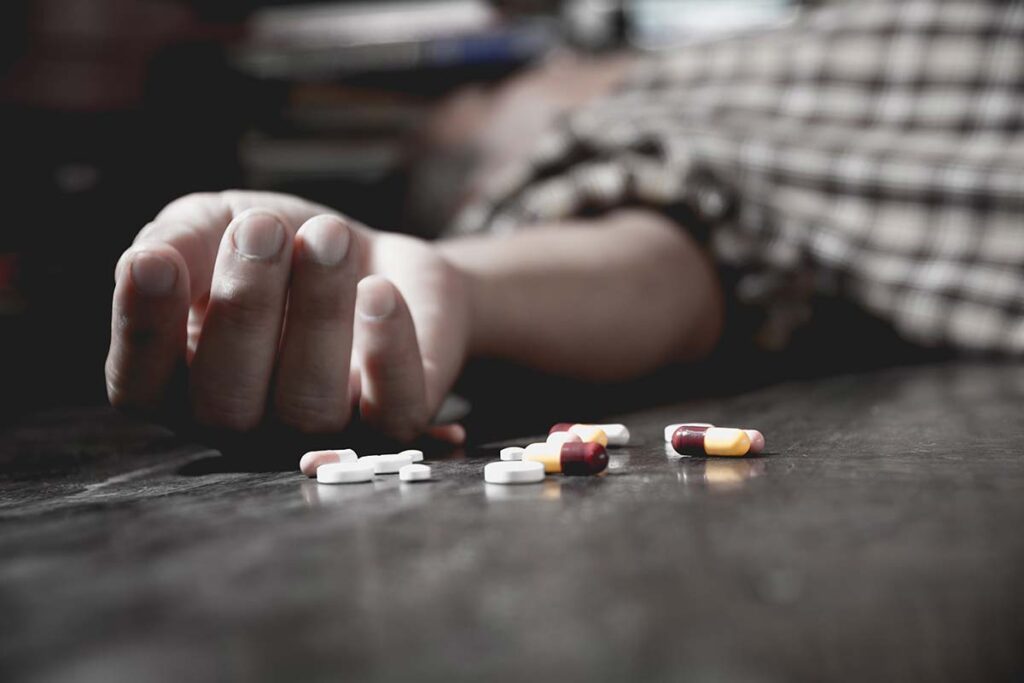The global opioid crisis has emerged as a significant public health emergency. Opioid overdose, a leading cause of preventable death, results from the excessive consumption of opioid drugs, which suppress the central nervous system—particularly the respiratory centers in the brainstem. Prompt recognition, timely intervention, and strategic prevention measures are essential in reducing mortality and long-term morbidity related to opioid toxicity.

Understanding Opioids and Overdose Mechanism
Opioids are a class of drugs that include prescription pain relievers (such as oxycodone, hydrocodone, morphine), synthetic opioids (like fentanyl), and illegal narcotics (e.g., heroin). These substances exert their effects by binding to μ-opioid receptors in the brain and spinal cord to reduce the perception of pain. However, excessive stimulation of these receptors, particularly in the brainstem, depresses the respiratory drive, leading to hypoxia and, if not reversed, death.
Causes of Opioid Overdose
1. Prescription Misuse
Patients may take higher doses than prescribed due to tolerance or pain mismanagement.
2. Illicit Drug Use
Use of heroin or street-purchased pills, especially those laced with potent synthetics like fentanyl, significantly increases the risk.
3. Polydrug Interactions
Combining opioids with other CNS depressants such as benzodiazepines, alcohol, or sedatives compounds respiratory depression risk.
4. Relapse After Abstinence
Individuals with reduced opioid tolerance following detox or incarceration are at heightened risk upon resuming prior doses.
Signs and Symptoms of Opioid Overdose
Early recognition of symptoms is crucial for effective intervention. Common clinical manifestations include:
- Pinpoint pupils (miosis)
- Unresponsiveness or inability to wake up
- Slow or absent breathing
- Blue or grayish lips and fingernails (cyanosis)
- Gurgling or choking sounds
- Cold, clammy skin
- Decreased heart rate or blood pressure
Diagnosis and Clinical Evaluation
Diagnosis is primarily clinical and based on physical signs, witnessed drug use, and patient history. In emergency settings, rapid assessment protocols often include:
- Glasgow Coma Scale (GCS) to assess consciousness
- Pulse oximetry and capnography to evaluate respiratory function
- Toxicology screening to detect presence of opioids or other substances
Laboratory and imaging studies may support differential diagnosis when mixed-drug overdose or other medical conditions are suspected.
Emergency Response and First Aid
Step-by-Step Opioid Overdose Response
Naloxone, an opioid antagonist, is the primary life-saving antidote. It displaces opioids from receptors and reverses respiratory depression. Forms include:
- Intranasal spray (Narcan)
- Intramuscular injection
- Auto-injectors for layperson use
Multiple doses may be required in cases of fentanyl overdose due to its high potency.
Hospital Management and Advanced Care
Once in a clinical setting, management includes:
- Airway support: supplemental oxygen, intubation if necessary
- Repeat naloxone administration: IV or continuous infusion in severe cases
- Monitoring for rebound toxicity due to naloxone’s shorter half-life
- Treatment of complications: aspiration pneumonia, hypoxic brain injury
- Psychiatric evaluation and addiction referral upon recovery
Preventive Strategies for Opioid Overdose
1. Safe Prescribing Practices
- Limit initial opioid prescriptions for acute pain
- Use of prescription drug monitoring programs (PDMPs)
- Educate patients on correct dosage, storage, and disposal
2. Public Health Interventions
- Widespread naloxone distribution to at-risk individuals and families
- Good Samaritan laws to protect those aiding in overdoses
- Needle exchange programs and supervised consumption sites
3. Opioid Use Disorder (OUD) Treatment
- Medication-assisted treatment (MAT) with buprenorphine, methadone, or naltrexone
- Behavioral therapies and support groups
High-Risk Populations
Certain groups are more vulnerable to opioid overdose, including:
- Individuals with prior overdose history
- People released from incarceration
- Patients prescribed high-dose opioids
- Those with co-existing psychiatric or substance use disorders
- Homeless populations and individuals lacking medical support
Societal and Global Impact
The opioid crisis has far-reaching consequences, affecting healthcare systems, families, and economies. In the United States alone, over 80,000 opioid overdose deaths occur annually, with synthetic opioids such as fentanyl driving the majority of fatalities. Globally, opioid misuse contributes to millions of DALYs (Disability-Adjusted Life Years) lost.
Frequently Asked Questions:
Q1: Can opioid overdose happen to someone taking prescribed opioids correctly?
Yes. Even therapeutic doses can cause overdose in vulnerable individuals, particularly when combined with alcohol or sedatives.
Q2: Is naloxone safe to use if I’m not sure it’s an opioid overdose?
Yes. Naloxone has no effect if opioids are not present and poses minimal risk when administered.
Q3: How long does naloxone work?
Naloxone typically lasts 30 to 90 minutes; however, opioids like fentanyl may outlast it, requiring repeated doses or monitoring.
Q4: What should I do if someone overdoses and naloxone is unavailable?
Call emergency services, perform rescue breathing or CPR, and keep the individual awake and breathing until help arrives.
Q5: How can opioid overdose deaths be prevented on a large scale?
Through education, expanded treatment access, harm reduction strategies, naloxone availability, and reform in prescribing practices.
Opioid overdose is an urgent medical and societal challenge that demands a multifaceted response. Through vigilant awareness, timely intervention, and robust prevention efforts—including naloxone distribution, education, and access to treatment—we can curb the rising toll of opioid-related fatalities. A collaborative approach between healthcare providers, policymakers, and communities is essential to safeguard lives and build a future less burdened by opioid harm.